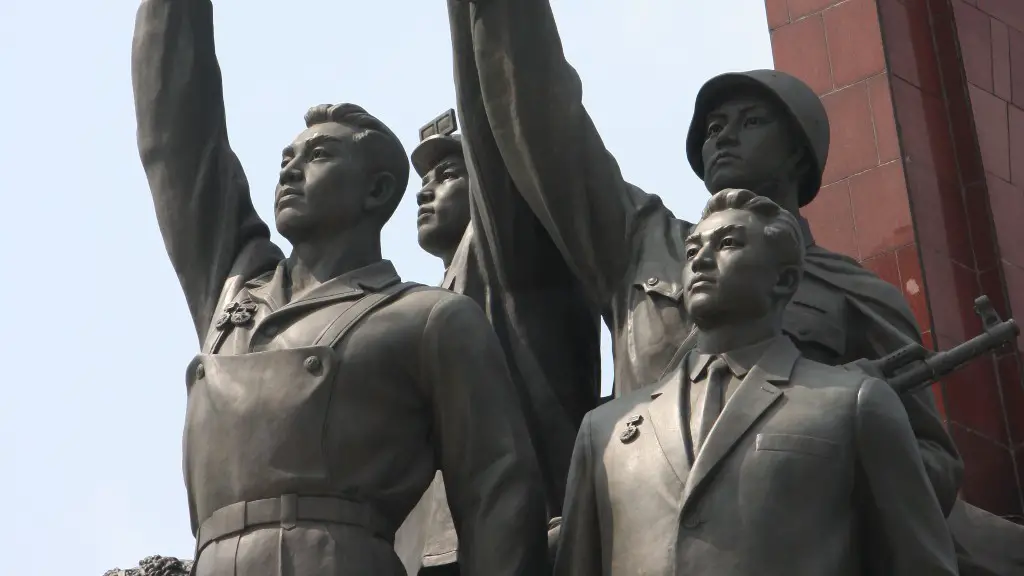Since the division of the Korean peninsula in 1945, North Korea has been at odds with the rest of the world. With its clandestine nuclear weapons program, the country has posed a formidable confrontation to the rest of the international community. Its missile technology, however, is the core component of the country’s defense strategy, and the fear of a nuclear-tipped missile has caused worry in the region.
North Korea has made significant progress in missile technology since the early days of its rocket program, and the country now possesses a variety of ballistic and cruise missiles that can be used to target land, sea, and air targets. The size and sophistication of these missiles varies greatly, and they range from short-range missiles that are capable of reaching targets within the country, to intercontinental ballistic missiles (ICBMs) that are capable of reaching targets across the world.
To date, North Korea has developed several ballistic missile systems, such as the Hwasong-12, the Hwasong-14 and the Pukguksong-2. The Hwasong-12 is a medium-range missile, with an estimated range of 2,500 km, and is capable of striking targets in South Korea, Japan, and Guam. The Hwasong-14, meanwhile, is an intercontinental ballistic missile, with an estimated range of 6,700 km, and is capable of reaching the continental United States. Finally, the Pukguksong-2 is a submarine-launched ballistic missile, with an estimated range of 2,000 km and is capable of striking targets in South Korea and Japan.
The fear of a nuclear-tipped missile from North Korea has been a pressing security concern for the international community for decades. In response, the United Nations has imposed various sanctions on Pyongyang in order to curb its nuclear and missile programs. Although these efforts have resulted in some deescalation, North Korea remains one of the most heavily armed countries in the world, with a large stockpile of nuclear weapons and missiles.
In spite of the international efforts to contain the North Korean missile threat, it remains unclear how the nation’s nuclear program will develop in the future. North Korea has expressed a desire to denuclearize and reach a peaceful resolution to the conflict. Until then, the international community must remain diligent in its efforts to contain the North Korean missile threat.
North Korea’s Ballistic Missile Arsenal
North Korea has an impressive array of ballistic missiles at its disposal. One of its most advanced systems is the submarine-launched Pukguksong-2, which can target land, sea, and air targets. The missile has a range of 2,000 km and is capable of striking targets in Japan and Guam. The Hwasong-12 is a medium-range missile, with an estimated range of 2,500 km and is capable of striking targets in South Korea, Japan, and Guam. Finally, the Hwasong-14 is an intercontinental ballistic missile, with an estimated range of 6,700 km and is capable of reaching the continental United States.
North Korea’s Nuclear Capabilities
North Korea has been developing its nuclear weapons program for decades and is believed to have stockpiles of nuclear warheads and delivery systems such as missiles and submarines. The country has tested nuclear devices in 2006, 2009, 2013 and 2016, and is believed to have an estimated stockpile of 20-60 nuclear weapons. North Korea is also believed to be developing submarine-launched ballistic missiles (SLBMs), which would be capable of targeting land, sea and air targets with a range of up to 3,000 km.
International Response To North Korea’s Missile Program
The international community has long been worried about the threat of a nuclear-tipped missile from North Korea. The United Nations has imposed a series of sanctions on Pyongyang in an attempt to curb its nuclear and missile programs. It is also believed that other countries, notably the United States and South Korea, have engaged in diplomatic efforts to bring North Korea back to the negotiating table and reach a peaceful resolution to the conflict.
North Korea’s Future Missile Program
North Korea has established itself as a nuclear-armed state and a formidable threat to the international community. It is difficult to predict what its missile program will look like in the future, however, as the country has pursued a strategy of brinkmanship and unpredictability. North Korea has expressed its desire to denuclearize and reach a peaceful resolution to the conflict, however, the international community must remain vigilant and united in its efforts to contain the North Korean missile threat.
Possible Military Action Against North Korea
The United States, in particular, has been at the forefront of efforts to contain the North Korean threat. In recent years, the US has stepped up its military presence in the region, and it has conducted a number of joint military exercises with South Korea and Japan. In the event of hostilities, the US is believed to possess the capability to launch a devastating military strike against North Korea. This would no doubt have catastrophic consequences, however, and should only be considered if all diplomatic efforts fail.
North Korea’s Foreign Relations
North Korea has been isolated from much of the international community for decades, and its relations with certain countries, particularly the United States and South Korea, have been particularly fraught. In recent years, however, there have been some signs of progress, particularly following the historic summit between North Korean Leader Kim Jong Un and South Korean President Moon Jae-in. In addition, the United States and North Korea have been engaging in diplomatic talks in an effort to reach a peaceful resolution to the conflict.


